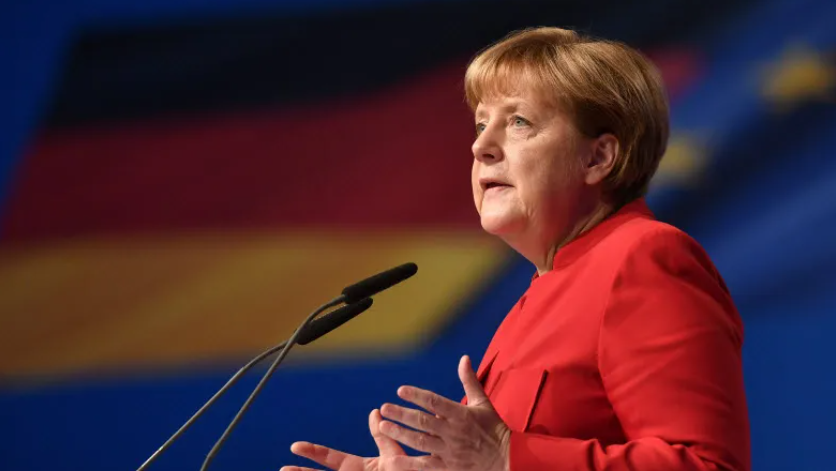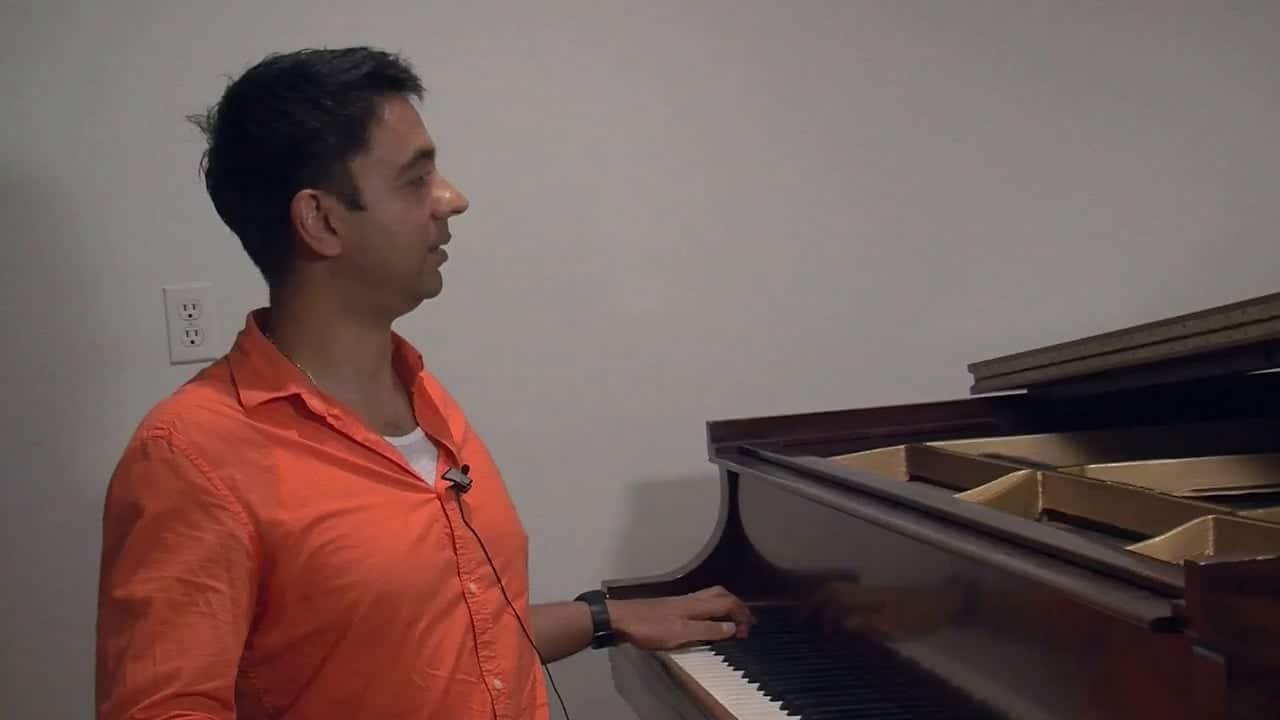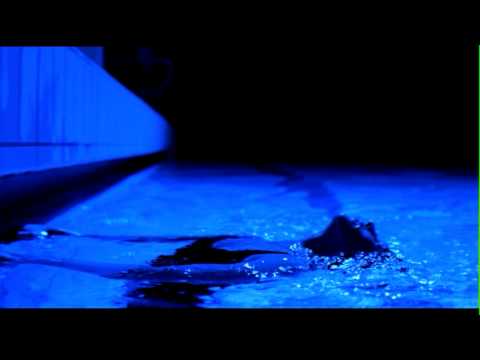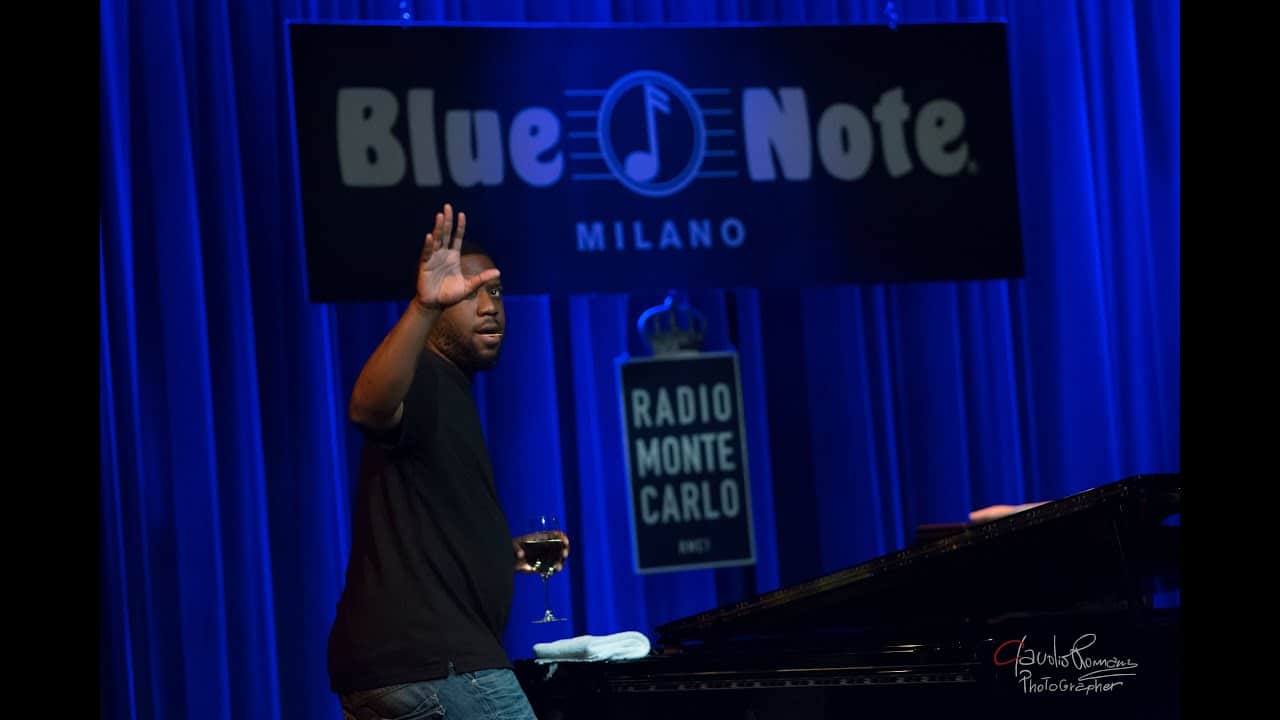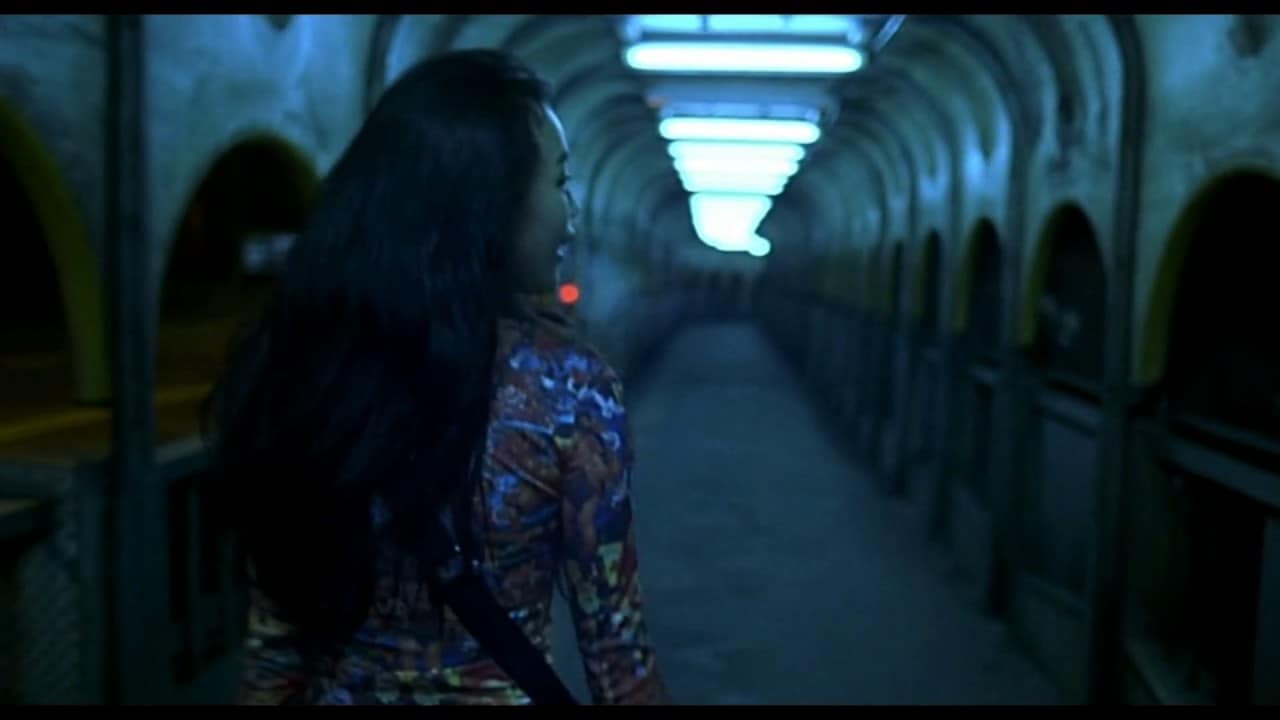Germany has been a rare success story in Europe. The lesson? Resist populism, move fast — and spend big.
On Miles Davis and leadership, enabling teams
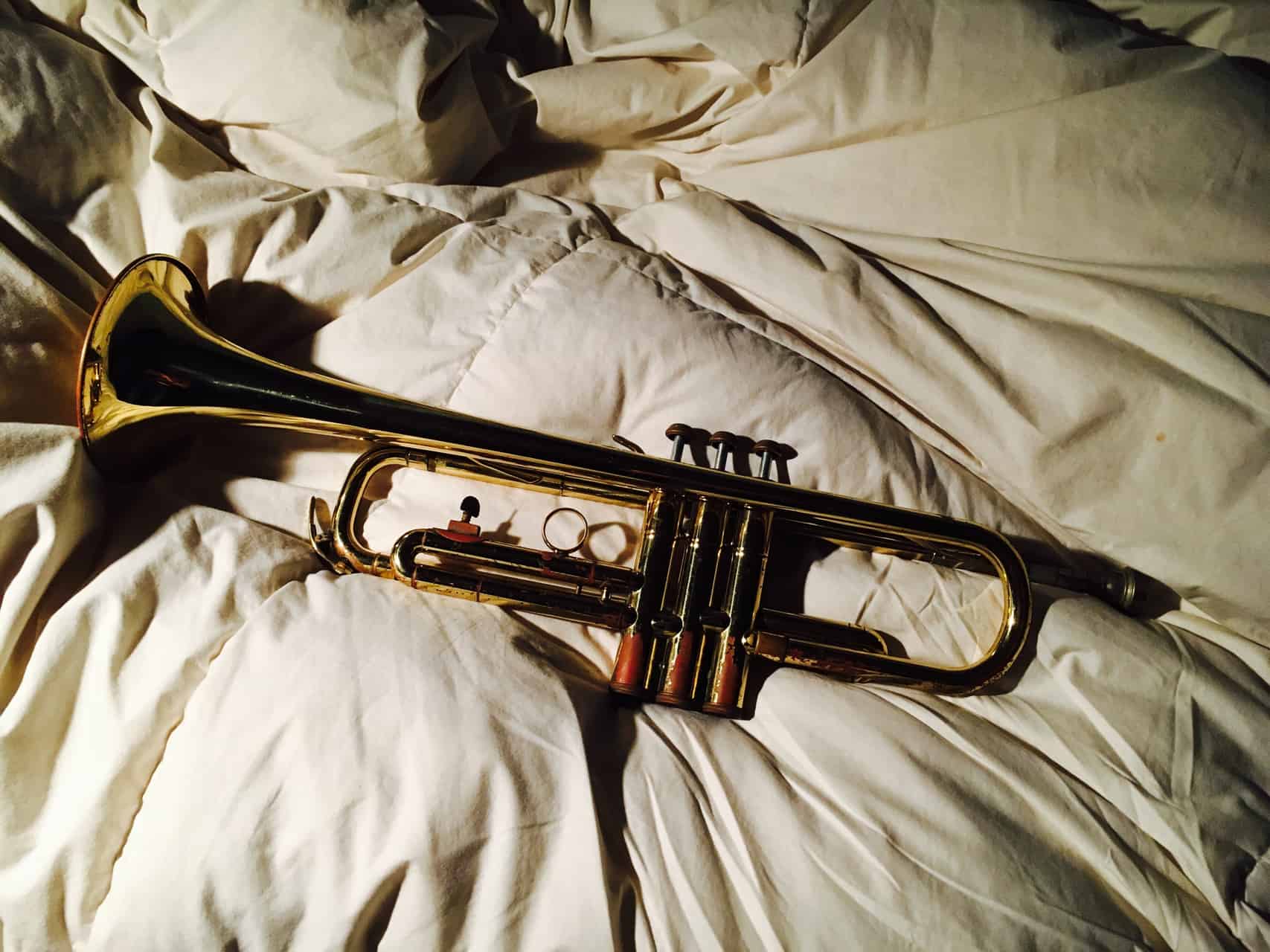
In the first degree, the new release documentary on visionary American trumpeter and bandleader Miles Davis is a music film. But it also offers a remarkable insight into how to motivate, inspire and work creatively with teams.
In fact, “Miles Davis: Birth of the Cool” is probably worthwhile viewing for anyone with a role, responsibility, or simple interest in the development of others.
Davis is the black music icon whose late-’40s “Birth of the Cool” sessions ‘cooled’ the frenetic rhythms and complex harmonies of Bebop, the foundation of what we think of today as modern jazz. From the late 50s, he made a series of large ensemble records including the Spanish-tinged “Sketches of Spain”, long before the term World Music was coined. As the ’60s became the ’70s, he was in on the ground floor of jazz-rock and related fusion forms.
Davis, who died in ’91, was interested in the whole process of creative awareness, in how individuals open up to both their inner possibilities and those of the surrounding environment. Herbie Hancock, pianist in Davis’ so-called Second Great Quintet, tells Stanley Nelson’s camera: “‘Don’t lean on what you know’. What he was looking for was the stuff you don’t know.”
Davis led by example. Yet his ‘example’ was never the prescriptive, ‘Do like me’. It was, as musicologist Tammy L. Kernodle explains, “‘Do you, be you’”. More precisely, perhaps, become you.
The group dynamic went something like this: ‘If I do this, what will you do?’ Or better: ‘What can I say musically — what can I play? — that will enable you to find your way forward, in your own voice’. A lot of the time, Davis himself didn’t say much, his inflected language marked by a certain “m” and “f”-lettered adjectival monotony. But the meaning of his words, at least those we hear in the film, seems utterly clear. And he could be ghoulishly funny, the same adjective having different meanings depending on the context.
Fascinating is how Davis’ musicians became more like themselves, that their contributions were unique to the collective project — to the particular ‘here and now’. Dave Liebman, another of Davis’ sidemen, has said: “Almost to the man, most of us played a certain way with Miles that we never played again. Somehow he got you to do what he needed … and what you wanted.”
Nelson’s film features excerpts from Davis’s co-written autobiography spoken by an actor in Davis’ signature rasping whisper. Arriving with musical sketches to record “Kind of Blue”, an unalloyed masterpiece that is today the biggest-selling album in the history of jazz, Davis says: “I knew that if you’ve got great musicians, they would deal with the situation and play beyond what is there and above where they think they can.” For John Coltrane, the most important post-war saxophonist after Charlie Parker, “that was the door he needed to find his own identity,” Kernodle says.
So was Davis, clearly something of a Shamanic figure, so exceptional in his ability to activate talent, that there’s not much there for the rest of us to learn from? Certainly, he was one of contemporary music’s great visionaries. The way he ‘cooled’ Bebop, and the distinct personal sound he developed as part of that process, took him, as the critic John Clare described it, as close to pure originality as is possible in most art-forms.
But his broader, more earthly lesson was that as a team-playing leader, he had the self-awareness and confidence to believe in the liberating power of ‘the other’. He brought into his groups young musicians with attitude (black and white) not because they were like him, or conformed to some standardised ‘company package’, but because they were not and they did not.
In the language of personal development, he had a “growth mindset” (the phrase is US psychologist, Carol Dweck’s). He cultivated a formidable sense of what a given collective might be capable of, how the “complementarities” of a group of creative people, with attitude, might look and work together. Coltrane is the most famous example, his maximalism throwing Davis’ feline minimalism into stark relief.
Miles believed in both inward-looking reflective practice — “Sometimes you have to play a long time to be able to play like yourself” — and in looking outwards, trusting one’s intuition and judgement. “You can get a direction like that when you see the right people,” he once said. “You automatically know that’s for you, y’know? In a matter of seconds.”
The regrettable in Miles, to put it mildly, lies in what “Birth of the Cool” shows of how he could be brutal towards his wives and girlfriends, some of whom mercifully speak for themselves in the film. Their compassion is remarkable. But it’s evident that, for Miles Davis, leading and working with teams, meant working and leading with men.
Nelson doesn’t psychologise. But we learn that the little boy Miles witnessed domestic violence in the family home. We hear how, unprovoked, he was badly beaten over the head by a cop outside a New York club he was playing at in the ’50s. His crime appears to have been smoking a cigarette. That he had just accompanied a white woman to her car, may not have helped.
* “Miles Davis: Birth of the Cool” opens in UK and German cinemas this week, French release will be soon.
Milestones
Birth of the Cool, 1949
Workin’ with the Miles Davis Quintet, 1956
Milestones, 1958
Kind of Blue, 1959
Sketches of Spain, 1960
Four and More, 1964
Miles Smiles, 1966
In a Silent Way, 1969
It’s About That Time, 1969
Bitches Brew, 1970
Agharta, 1975
We Want Miles, 1982
Decoy, 1984
Music from Siesta (with Marcus Miller), 1987
In Germany, the Greens are now a mainstream political force – and they will shape Europe’s future
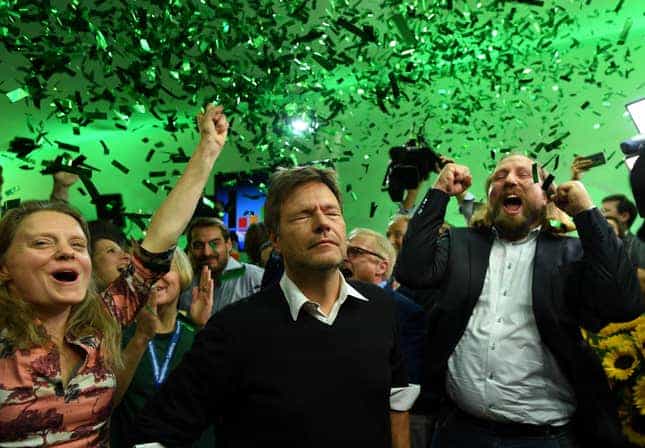
The passion of old green radicalism and the pragmatism of contemporary, inclusive German politics could help Europe find a way to face the problem of climate change.
Chaotic ‘yellow vests’ exposing fragility of France
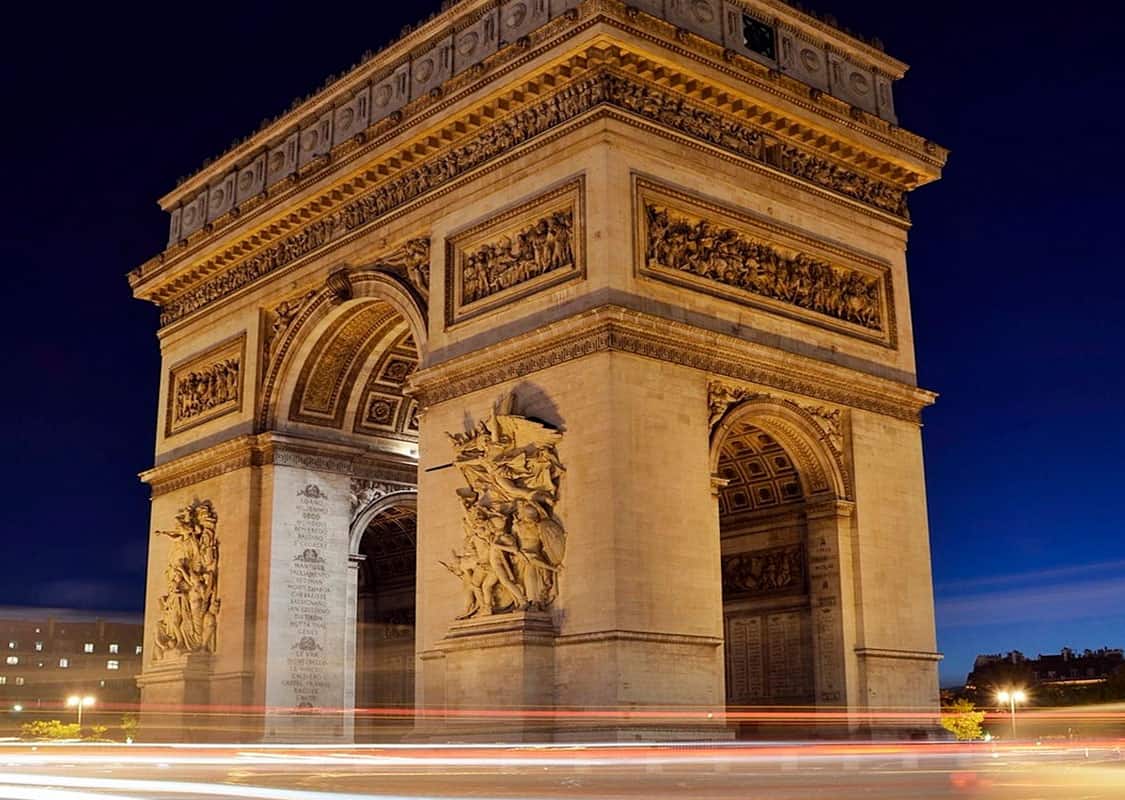
The anarchic “yellow vests” movement is a disaster for France and a setback for Europe, and it may prove decisive in the advance of European populism.
For an Australian, the iconic sequence turned on the ransacking of the Arc de Triomphe from within. Outside, the flame of the eternal soldier, first lit after the unconscionable carnage of World War I, remained miraculously alight as its dais was pelted by beer bottles.
And yet the nihilism of these fringe hooligans served to evoke the significance of things far greater than small fuel tax rises, now scrapped.
At stake is France facing up to, or yet again not, the challenges of accumulated economic and political problems that have dislocated the nation, discredited the governing class and brought power within reach of populists.
If Emmanuel Macron’s reform project comes undone France may have squandered its last opportunity for substantial reform “in a democratic and peaceful manner”, to quote economic historian Nicolas Baverez.
The signs are not good: France’s quarterly growth forecast has halved in the past six weeks and wiped about €15 billion ($24bn) from the national economy. European elections in May risk becoming merely a referendum on Macron, while a threemonth national “consultancy” will further slow momentum. From here on, any kind of revenue-raising exercise via taxation is going to be hard to sell.
Insurrectionary street politics lies at the heart of France’s DNA. Not just in 1968; in 2005, rioting in the depressed immigrant suburbs of Paris led to 20,000 cars being torched in three weeks. The much publicised Cronulla riots that year led to the “dismantling”, as the Financial Times memorably described it, of 40 vehicles.
But the familiarity of political violence shouldn’t mean minimising its significance. The recalcitrants are right: the French pay too much tax, more than any of their OECD counterparts. Ordinary people are getting desperate. The worry, though, is what that desperation may bring. As things stand, populists are the only political alternative to Macron and his La Republique En Marche party.
The fragility of France’s politics today, with its faltering economic model, make it an open boulevard for populism: the weakness of its informal, as against formal, institutions; the social atomising of its society; the way populist thinking has penetrated the mainstream; the strangeness of France’s ongoing fascination with radicalism of both the Left and Right.
Primed by social media, the yellow vests are a brilliant example of directionless modern agitation in politics. The movement is accurately viewed as populist, but it is a mishmash seeking less tax but more government, participative democracy but strong leaders. It blames problems essentially on the ill will of elites. As Harvard political scientist Yascha Mounk has remarked, many of the yellow vests seem to believe that Macron could change their lives overnight if he wanted. The yellow vests, then, should be read not only as populism but as populism taking greater hold in a country with a kind of creeping sympathy for it.
Before the 2017 presidential elections, the National Front (FN), now rebadged the National Rally, won municipal, European and regional elections, increasing its vote at each poll. FN’s Marine Le Pen came second to Macron — ahead of the main parties — with a record number of votes in both rounds.
The traditional so-called republican front, where other parties call for a final-round vote against the pariahs, worked less efficiently than previously.
And there were major developments: a prominent minor party entered into an electoral agreement with the extremists (Nicolas Dupont-Aignan’s Stand Up France); assorted minor figures of the mainstream Right party, the Republicans, joined the FN between rounds; and a few prominent public intellectuals such as historian Emmanuel Todd and philosopher Michel Onfray, did not call for a vote to block Le Pen.
The most serious faux pas, however, in much of the analysis of the 2017 election was to argue that Macron defeated populism convincingly in the second round. This was taken as evidence that the French will never vote for an extremist in the second round. But they could very well put two populists in the lead in round one.
They almost did. Macron was placed first with 24 per cent, followed by Le Pen on 21.3 per cent and another populist, Jean-Luc Melenchon, a soak-the-rich revolutionary arguing for a 100 per cent top tax rate, scored 19.6 per cent. Add the 7 per cent who voted for various Trotskyist and sovereignty candidates and the first choice of almost half the French voters was a populist.
It’s here that the underlying fragility of French politics is clearest. Never elected, unknown to the general public three years before, Macron staged a veritable revolution at the ballot box. The yellow vests are in a sense his flip side. Who’s to say a figure as confirmed a democrat as Macron might not emerge as quickly? At the moment, though, there’s no one.
How did France’s brilliant young President, Europe’s great reform hope, go so fast from golden boy to the target of blazing insurrectionary violence?
The popularity of French presidents never lasts long; expectations of the new President were uncommonly high, and France’s modern capitalist economy is not working. As always there’s nuance: wealth is more fairly distributed than in the US or Britain, but it comes with chronically low growth, crippling tax, high unemployment and debt, now almost 100 per cent of gross domestic product. The last time the jobless rate dipped below 7 per cent was 1977; the last time the national budget was balanced was 1974.
The welfare state, meanwhile, has become a vastly expensive pipe factory of complexity, mightily hard to fund. France, with 65 million people, has 500,000 more public sector workers than Germany, with 82 million people. What used to be called French corporatism is another problem, with five trade union confederations and often multiple unions across sectors.
Government, audit and think tank reports since at least the mid-1990s have called for similar things: democratising an education system that favours the elite, and a coherent approach to industry when deindustrialisation has been swifter and deeper than elsewhere. Industry is uncompetitive, and low margins and high labour costs undermine the capacity to invest in export industries.
The French crisis carries lessons for all Western democracies. At the barricades, the far Right and far Left have joined forces, united in anger, a probable precursor to future politics if mainstream parties fail to argue the benefits of necessary structural reform.
Historians of Europe may look back on the yellow vests as the moment when populism drew in on the mainstream. Between two-thirds and three-quarters of respondents to one opinion poll said they were sympathetic to the yellow vests, even after the most shocking violence — far higher than the 52 per cent in Britain who voted for Brexit or the 40 per cent in the US generally held to constitute Donald Trump’s base.
The charitable view is not that Macron has dropped the ball but that he is realising the hard way that reform must be undertaken with, and not against, the wishes of the electorate. Who knows? The brilliant 41-year-old may yet renew and reinvent himself.
Pictures: https://www.istockphoto.com/de/fotos/proteste-frankreich?mediatype=photography&phrase=proteste%20frankreich&sort=best
Miles Davis – Spanish Key
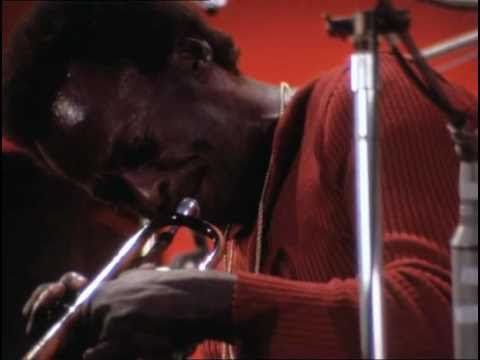
Eclectic Afro-American trumpeter, band leader, Miles Davis — “Spanish Key”
The Mirror – Burning House
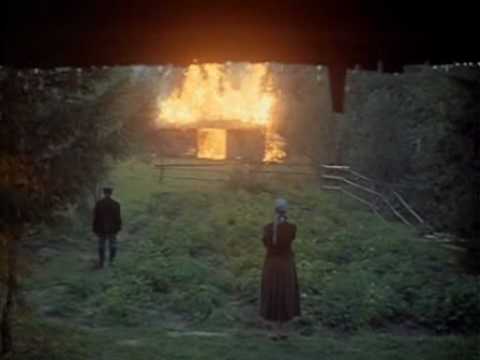
From Russian film-maker, Andrei Tarkovsky — fire scene from “The Mirror”. The sequence of long shots depicting the burning house. Pay attention to the use of natural elements, and how they interact – water and fire.
In conversation with Shirley Hazzard
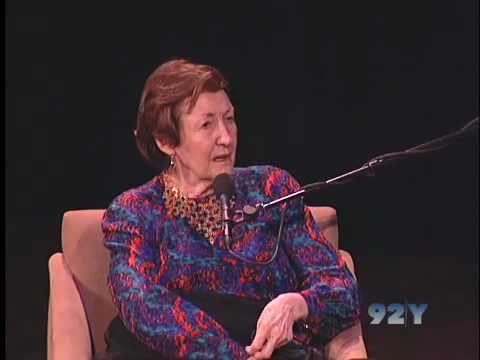
The Great Fire: Richard Ford in Conversation with Australian novelist Shirley Hazzard
On the central American migrant caravan
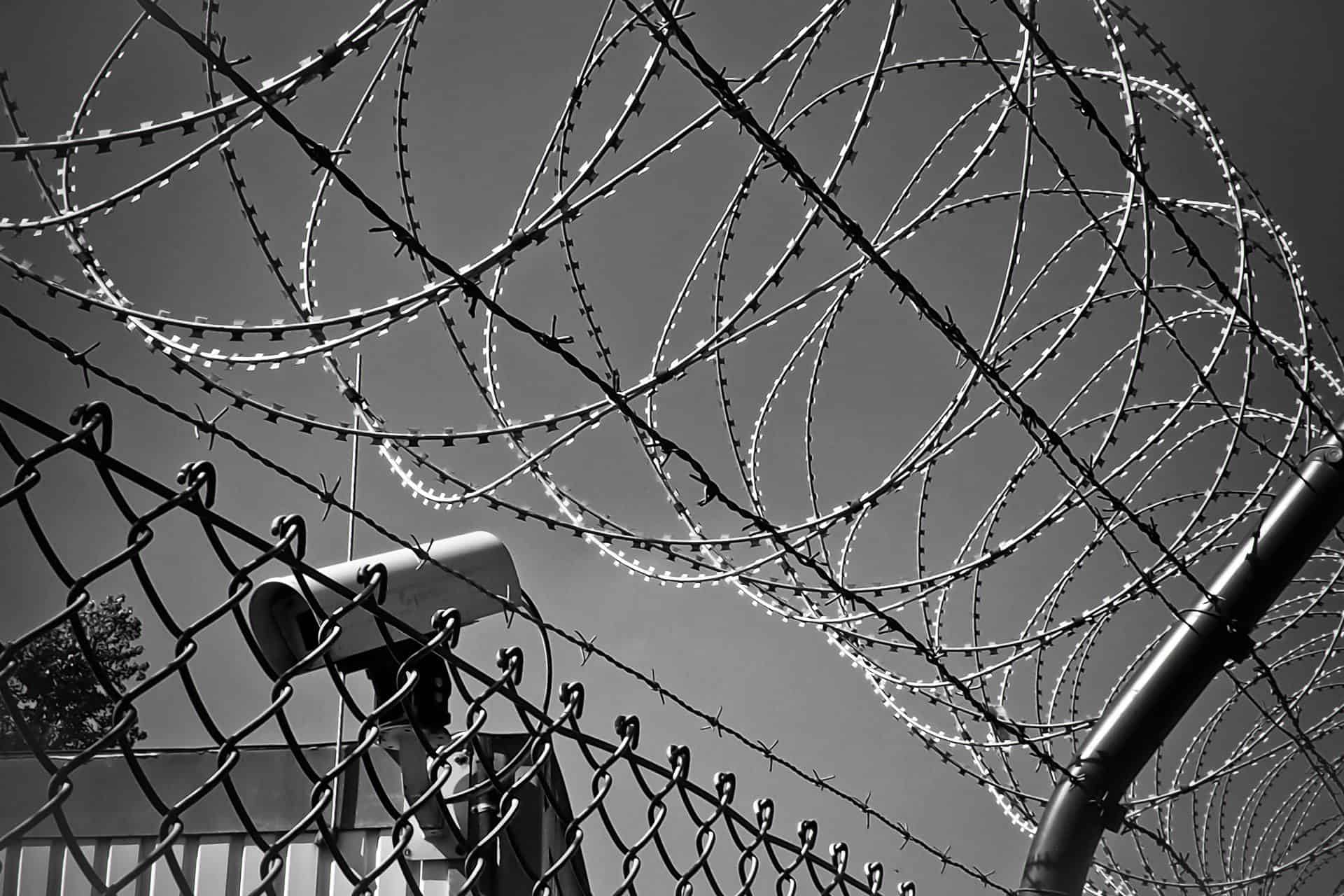
Central American migrants amassed on the US-Mexican border have shown the limits of the “deterrence” argument on migration variously used in Europe, Australia and the US, and it is that when governments show sympathy to asylum-seekers, migrant arrivals dramatically rise.
The false contention is that they not only invite the problem, they create it — effectively putting boats in the water, calling would-be wolves to the national gates (“stone cold criminals” and “drug dealers”, according to US president, Donald Trump).
Australia has used the argument to justify the punitive, cruel and deceitful “Pacific Solution”, that shunts asylum-seekers including poly-traumatised children into cramped and unhygienic centres for long periods on remote islands.
And it was widely deployed against German Chancellor Angela Merkel when she opened her arms to thousands of asylum-seekers congregated on a train platform in Budapest in 2015. A humanitarian catastrophe in Europe was narrowly avoided but instead of recognition for moral courage, Merkel was blamed for the crisis, ex-post facto — as if standing for a selfie in a Berlin refugee shelter triggered the surging millions fleeing the brutality of Syria.
The migrants now in Tijuana, mostly from Honduras, Guatemala and El Salvador, must know that the White House incumbent is an anti-immigrant crusader for “zero tolerance”, criminalising border-crossings and separating children from their parents. They probably also know that he uses race, as he does national origin; religion; one’s sexuality and able body (or not), like superiority tropes to sew division in an attempt to bring people ‘on side’ — including from groups he marginalises, in fact.
But none of this, not the sheer physical and emotional challenge, not Trump baring his teeth at the Midterms — not the tear gas — has stopped thousands of desperate people from making the long and arduous journey north.
And therein lies the rub.
As ever with refugees, the story has been one of suffering, of people leaping from bridges, of tearful parents losing children in the throng. Secondary but worth noting, is that Trump’s callous politicking evokes the syllogism made known by the British Yes Prime Minister television sitcom. If my dog has four legs, and my cat has four legs, therefore my dog is a cat. Honduras has a drug problem, Hondurans are the caravan, so Honduran drug dealers will descend on the US like rain.
It’s a nasty bit of nonsense in the face of an extremely complicated problem: mass migration, and it ought to repel Trump’s god-fearing base.
Seen from Munich, the caravan recalls the bedraggled humanity of the so-called Balkan route three years ago, when hundreds of thousands of asylum-seekers arrived from life-disfiguring conflicts in the Middle East, notably Syria, and specifically the 20,000 who arrived at Central Station from Budapest on the first weekend of September, 2015.
The caravan also reminds one of the general exploitation of the migrant in European public policy debate currently — on the political extremes, yes, but more worryingly on the mainstream right. We’ve seen it in France, more recently in Austria and Italy, and in two German regional elections last month, though there with a glimmer of hope because the opportunism in Bavaria was so blatant — the Premier referring to “asylum-tourism” — that the reactionary conservative campaign came a cropper.
In the US, Trump’s response has been to defend the use of tear gas on women and children; deploy the language of warfare against people still a month’s footslog from the US, and have border troops erect “beautiful barbed wire” — to see little kids impaled upon? He’s flagged cutting financial aid to Honduras, Guatemala and El Salvador, when it’s precisely aid that addresses the underlying causes of mass migration in the first place.
Such a hard-line on both development aid and border control does not stop mass migration — so much for the hoary old “deterrence” argument. But it does drive desperate asylum-seekers into the arms of people-smugglers. And it is they, of course, who are the true predatory wolves.
This is the real reason the German far-right could triumph at this weekend’s elections

The growing success of Alternative for Germany is not only a result of Angela Merkel’s compassionate response to the migrant crisis, but old east-west wounds that are yet to heal
On the Oktoberfest

Among the big planetary parties, the annual Oktoberfest in Munich has perhaps the most impressive constellation of worldwide siblings, with mini-fests now established in places as far afield as Sydney, Mexico City and Santa Catarina in Brazil.
The proud parent event, which opened last weekend and runs until 7 October, is Europe’s biggest festival of any kind — organisers call it a “folk festival”. A staggering 6 million people attend in just over two weeks.
Of the 6 million, about 15% or 900,000 were foreign revellers in 2014 — the most recent figures available — some 7%, or 63,000, were Australian. That’s no small beer given that only 8% came from across the border in Austria, about an hour’s drive from here, and 4% from France, which of course also shares a border with Germany. Americans were the largest group of foreigners, at 10%, according to market research commissioned by the City of Munich.
“You meet people and the usual barriers just drop,” says Georg Veit, a theatre lighting designer who has worked at La Scala, Italy’s famous opera house, and with Spain’s La Fura dels Baus at the Sydney Opera House. “It’s great to come as a single. Or you might sit with some Bavarian couple who don’t say much at first and then open right up! There’s no (exchange of) telephone numbers or anything like that. It’s absolutely of the moment.”
Georg, 50 — Goxl to his friends — is at the Oktoberfest 13 days and nights some years, and has been quoted in the German media as a fine connoisseur of the event.
“Everybody lets their hair down,” he says, ensconced in the famous Hacker-Pschorr tent. Enough to be dancing on tables in their thousands when things reach full swing. Suddenly, the informality rivals what we think of as fairly habitual in Australia, Canada or the UK.
But among 600,000 visitors on the busiest days, between 30 beer tents — including 14 hangar-like “mega-tents” — the novice can feel quickly disoriented, especially if just arrived from abroad kitted out and chafing in traditional leather shorts (Lederhosen), or trussed-up in the traditional dress (Dirndl), with no local smarts or table booking.
And it’s not just the madding crowds. Everything about the Oktoberfest, or Wiesn as the locals call it (pronounced: VEE-zn), startles by its size, across 42 hectares with seating for 119,000. There are 151 fair ground attractions, and approximately one kilometre of urinals. In a recent sample year, 2016, Bavarian Labor Department figures said 6.6 million litres of beer were served, usually in the Bavarian litre-glass or “Mass” (Maß); 366,876 chickens consumed; 67, 227 pork knuckles and precisely 28, 377kg of roast almonds.
“The first week is much less crowded than the second,” Goxl advises. “On the Monday (through) Wednesday the tents are walk-through even in the evenings”. This is particularly true of the Hofbräu Tent — one of the biggest, with capacity for 10,000 including the outside beer garden, and where the proportion of international visitors is near to 25 or 30%.
The Augustiner Tent is more traditional, known for its Oompah music and Augustiner beer, perhaps the Munich lager, which is still brewed in wooden kegs. Founded in 1328, Augustiner-Bräu famously does not advertise — on television (brewers are not allowed to by law in Germany), or in the press, or even on public transport. Just via the brewery trucks dotted around Munich streets.
The Hacker-Pschorr Tent is the most-photographed, with a child-like blue sky and white cloud ceiling designed by Oscar-winning set designer, Rolf Zehetbauer, who did ‘The Neverending Story’, Ingmar Bergman’s ‘The Serpent’s Egg’ — filmed in Munich — and Bob Fosse’s ‘Cabaret’, for which he won the Academy Award.
Among the other mega-tents, The Schottenhamel, founded in 1867, is the place of the festival opening, when the Mayor of Munich “taps” the first keg, to the boom of a dozen canons. Käfers, looking more like a ski-lodge than a tent, is for VIPs and the chic set — the stars of the Bayern Munich football team attend in Lederhosen with their wives and girlfriends. Entry can be difficult if you “don’t know someone”, Goxl says, but an “aftershow” outside til the wee hours is for everyone. The beer and the champagne flow.
As the Bavarians say, “Nur ein Schwein trinkt allein” — only a pig drinks alone. And at the Oktoberfest, it seems, nobody ever does.
European migration blamed for spike in populism, as extremists eye EU elections
The European migration battle reminds us that “should” is a word we probably shouldn’t use in politics and government. It tends to be a reality denier. Long before the current European political crisis, with Bavaria’s CSU party this week bringing coalition government in Germany to the verge of collapse, the rest of Europe should have better helped Germany with the wave of a million refugees that arrived here in 2015-16.
World Cup 2018: Socceroos the product of Australia’s creation!

Events such as the soccer World Cup in Russia are about more than a bunch of blokes (or women) kicking a ball around a park. Sport carries mass and popular culture, the culture of youth and minorities. Perhaps, though, the way it carries national cultures — or is purported to — gets particularly noticed.
“The principle weapon of the Australians is their mental approach,’’ a French journalist said about the Wallabies some years ago. The aim, he wrote in the French daily Liberation, is less to win for one’s “country, flag or for history” than for one another.
“They play for the other members of the team, their mates (in English in the text). They’re competitive until the end for the guy who defends next to them on the line. And it’s this dynamic of active solidarity that makes them so formidable.”
Who wouldn’t be touched by the story of Daniel Arzani? The 19-year-old who came to Australia from Iraq aged seven and has just become the youngest player ever to make the Australian World Cup Squad. To the bemusement of fellow rail passengers, I found myself screaming at my iPhone on the Munich Underground upon reading the news: “Go son, go!”
Arzani’s parents told reporters he thought he wanted to be either a neurosurgeon or a footballer before choosing to be a footballer. When his father, speaking for the family, said he loved Australia and its “culture” it was presumably not the art galleries or the architecture he was talking about but the environment that enabled young Daniel to dream of being both a Socceroo and a brain surgeon; remembering, of course, that the “loved” culture also created the art galleries and a lot of the art that’s in them.
The products of culture — a symphony orchestra or dance troupe — bring hundreds, even thousands of people, into contact with each other. Never more so than when the product is sport and especially if that sport is football. The soccer World Cup, starting in Russia this week, is by far the biggest single-sport competition in the world.
Seen from abroad, sport in Australia looks tribal, as elsewhere, but not in any violent sense — off the field, there are neither hooligans nor skinheads nor black-clad anarchists marauding in the streets. To borrow from historian Manning Clark’s famous phrase, where sport is concerned there’s no “blood on the wattle”.
The veteran German journalist Holger Gertz, who’s covering his fifth World Cup after 10 Olympic Games (Summer and Winter), has told me more than once that he thinks the Sydney 2000 Olympics were the “most beautiful”. After the fall of the Berlin Wall and with the Cold World over, with all those volunteers and local crowds applauding the prowess of non-Australian athletes, “they made us feel that world peace was in reach.”
Yes, there have been ethnicities associated with domestic soccer clubs, but that has receded with Australia winning through to the finals of the past four World Cups.
In fact, Australian sport appears both intensely international and intensely local (the creation from scratch of our own football code is testament) and usually a source of integration for non-Anglo Australians and pride and expression for Indigenous Australians.
We want to see the Socceroos do well because they represent us, but also because we feel that we’ve played a part in creating them. They are us.
Pictures: https://www.istockphoto.com/de/fotos/australian-soccer-team?mediatype=photography&phrase=australian%20soccer%20team&sort=best
Macron visit: how Paris is newly resurgent, despite Trump’s Jim

Prime Minister Justin Trudeau welcomes French President Emmanuel Macron to Centre Block on June 7 during Mr. Macron's visit to Canada before the G7 summit in La Malbaie, Que. The Hill Times photograph by Andrew Mead.
Macron’s election in May 2017 lifted French business and consumer confidence to record levels. And the impact continues to be felt today in terms of tourism, the property market, and law and order.
Who remembers Jim, United States President Donald Trump’s elusive, go-to guy on all things Paris?
Never accorded a surname by the White House, no reporter could trace him, but “Jim” gained a degree of notoriety for advising Trump against visiting the City of Light, because lax immigration policy and tight gun laws had made it a cesspool of foreign extremists. “‘Paris? I don’t go there anymore,’” Trump relayed Jim telling him. “‘Paris is no longer Paris.’”
So how’s Paris faring now — despite Jim’s warning — as French President Emmanuel Macron visits Canada this week, stopping in Ottawa, Montreal, and Quebec City, before the G7 summit in La Malbaie?
The short answer is better, though with caveats.
Macron’s election in May 2017 lifted French business and consumer confidence to record levels. And the impact continues to be felt today in terms of tourism, the property market and law and order. Paris is not France, as the French are fond of saying, but it is a population of 12.4 million people.
Confidence is one of the great vagaries of contemporary economics (an excess of it marked the U.S. subprime mortgage crisis; a lack of it prolonged the Greek debt crisis), but its wavering hand looms large behind the economic uptick in France. Like the old market adage “a company has a problem when the markets say that it does,” Macron is perceived as pro-business, so he is.
But is France improving because of confidence in Macron? Or is France doing better, hence the confidence in Macron? His 44 per cent approval rating after a year in office is well above his two most recent predecessors. Either way, the improvement in growth, investment levels, and corporate profitability is also due to what he’s actually doing, to liberate employment for example.
Tourism to France has recovered since a slight downturn linked to the 2015 terrorist attacks, with 88 million tourists visiting last year. La belle Paris attracted 33.8 million tourists, up 2.9 million from 2016. France remains the world’s first tourist destination by visitor numbers, though it has slipped to fifth by tourism revenues behind the U.S., Spain, Thailand, and China.
Paris private property sales grew 17 per cent last year, despite price rises of about 10 per cent across the board. The mid-market east is a good overall gauge (the 11th district and nearby sections of the 12th), where prices are now a colossal €10,000 to €12,000 a square metre.
Parisians voting with their feet
The downside, aside from the infuriating recurrence of strikes—currently by rail unions, whose members are retiring at 50 when the state rail carrier is €50 billion in debt — is that Paris is expensive and congested. The city is losing about 7,500 residents a year, as populations rise in most of the developing world’s equivalent cities. Greater London, for example, has grown from 6.6 million to 14 million since 1980. Meantime, unemployment in Paris is 7.4 per cent, substantially less than the rest of France but higher than the full employment of Toronto and Vancouver, New York and Los Angeles, London, Sydney, and Melbourne.
Gentrification has grown the number of high-skilled workers in Paris (cadres in French, there’s no exact English equivalent), from a quarter of the population to almost half, according to economic historian Nicolas Baverez (up from 25 per cent to 46 per cent); the working class declining from about one in five to less than one in 10 (specifically, from 18 per cent to seven per cent). Public housing allocation by district serves to maintain a degree of social diversity, putting a brake on the kind of uniform, seemingly endless-bars-and-hairdressers gentrifying seen in some North American and Australian cities, but pressure on supply has pushed the cost of private housing up.
At the behest of the president, the new approach to law and order is marked by a return to proximity policing, with local police numbers on the increase. There are funding issues, when City Hall is already €5.5 billion in debt (on a total operating budget of €9.5 billion). But there’s a degree of cross-party consensus: proximity policing and emphatically not enabling greater access to guns à l’américaine are believed to be central to avoiding a repeat of the 2015 attacks that killed 130 people.
When Donald Trump told the U.S. National Rifle Association the Paris attacks could have been avoided if Bataclan concert-goers were armed — his hand cocked like a pistol while mouthing the “boom boom” of a serial gun-killing — former French president François Hollande called Trump’s behaviour “shameful” and “obscene.” A former terrorism victims’ association representative messaged Trump on Twitter, in English: “Go §#@% yourself (you can use a gun if you want).”
And Jim? Given Trump’s wont to confuse fiction with reality, perhaps Jim was only ever a narcissistic president talking to himself, a kind of reassuring imaginary cohort, as Trump sought to adapt to the alien surroundings, not to say foreign policy challenges, of his big new job at the White House.
In any case, Jim has made no comment on what might be called the Parisian renewal. Trump, meantime, has visited the great city.
Australia is about to get a dose of French president Emmanuel Macron’s charm
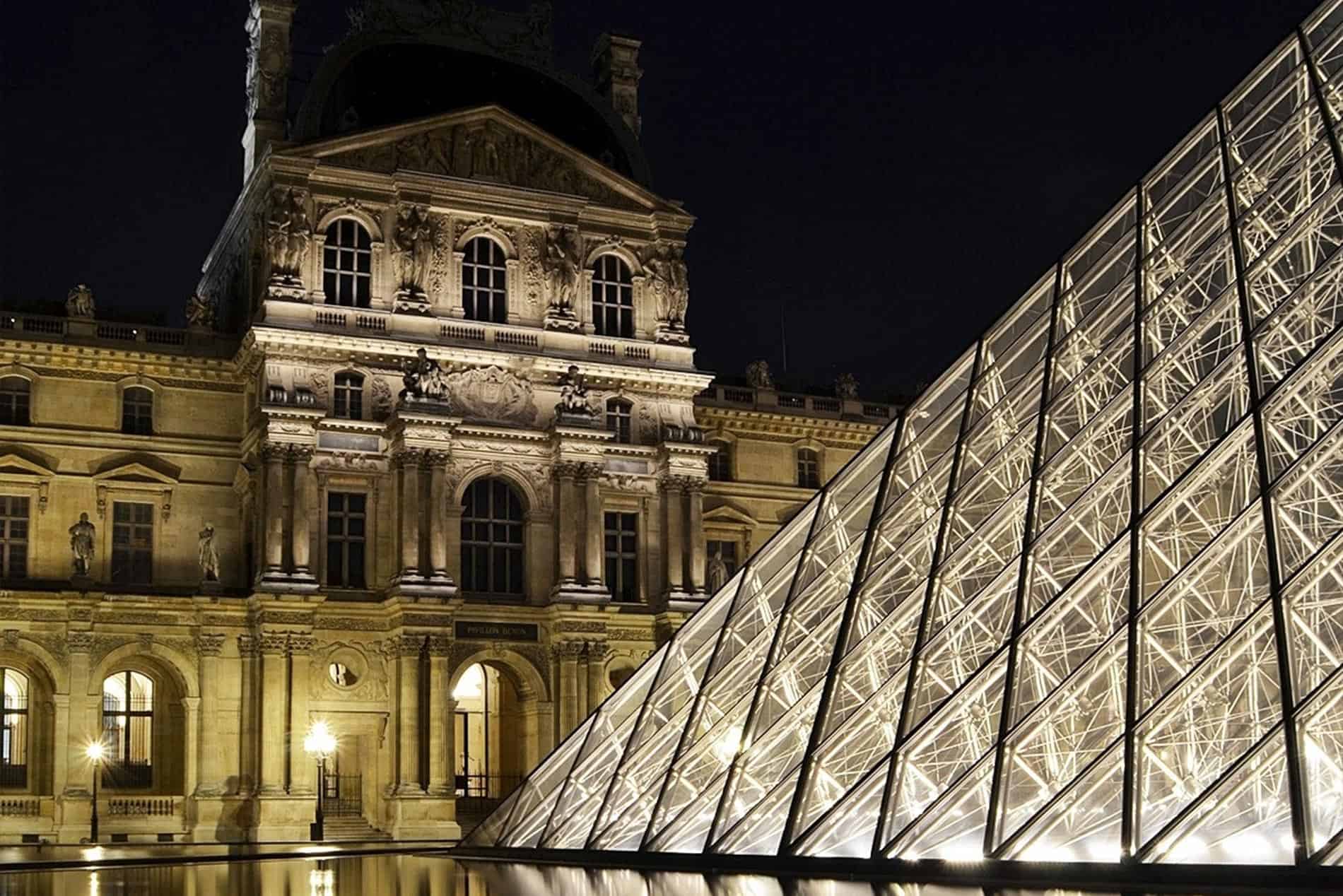
AMERICANS have just witnessed and Australians are about to get a taste of Emmanuel Macron’s big-vision thinking, not to say the galvanising effect of it, when he arrives in Australia today.
Galvanising by dint of what it is — multilateral, pro-European, inclusive — and by what it is not: acutely divisive, Donald Trump-type rough-talking.
China’s role in the Pacific, defence ties, climate change, economic issues — and cuisine — will be high on the agenda when Macron meets with Prime Minister Malcolm Turnbull.
Officials said the French president would also discuss security in the South Pacific on his first bilateral visit to Australia. Australia has a $50 billion deal to purchase 12 next-generation submarines from the French. Cuisine will be discussed at a lunch on Wednesday with Australian and French chefs.
In international diplomacy, Macron has shown that flattering morally tainted hands doesn’t mean entering into a Faustian pact with their owners.
He combines a certain pride in the office of president — receiving Russia’s Vladimir Putin at the Palace of Versailles, President Trump at the Eiffel Tower, while lending the Bayeux Tapestry to the Brits — with a cool kind of sleeves-up communicability.
Check out the laid-back style, what a young French colleague of mine calls the “coolitude”, of Macron’s Twitter videos.
The key concept chez the French president, though, has been coherence based on principles. He was elected on a program to shake up France and is implementing it.
In the workplace, he’s introducing enterprise bargaining (moving away from branch-based negotiations) and making the French industrial appeals court faster and cheaper, and so more proemployment.
Elsewhere too, reform is on the cards. Reform of education and training at the state-owned railway company — 50 billion euros ($80 billion) in debt with train drivers retiring at 50; a law to “moralise” politics; tax reform for pensioners (they will pay more), and the wealthy (dead capital stuck in highend real estate will be more heavily taxed). These changes have dizzied the electorate.
But the bottom line is that France has to be fixed. Those who are working should be taxed less and those who are no longer working must contribute a bit more.
The IFI (formerly ISF) wealth tax in fact brings in little revenue for the government, but it’s a symbol. Again then, there’s coherence.
The result is that by the usual indicators, the French economy is improving. The key will be whether the positive impact of reforms flows through to ordinary people by the next elections in 2022 (hence the speed of their implementation).
Unless sustained, the current barely 2 per cent annual growth rate won’t be enough to boost wages or create jobs, or help the middle class into housing when city prices are elevated.
But the stakes are high. Macron’s election torpedoed the traditional parties. Since then, the mainstream right has moved further to the right as Macron siphons off its traditional base.
Macron himself rose from nothing to the presidency in a year. So there’s every reason to believe someone else could do the same, if Monsieur Macron does not deliver.
Those newcomers, even if mutton dressed as lamb, might very well come from the populist space.
Sir John Monash and Anzacs deserve recognition in Europe
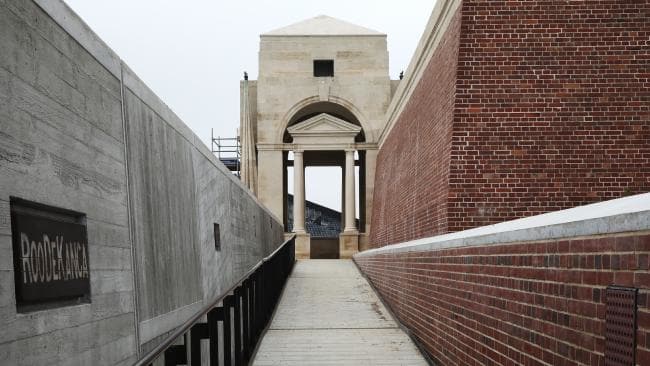
ACCORDING to his military ID, he was at Villers-Bretonneux in France on Anzac Day, 1918.
But he was not an Anzac. He was from Oldenburg in Germany’s north. August Grotelüschen “spent a lot of time in the trenches of the Somme”, his son told a group of German newspapers. “But he never said anything about it”.
In an interview to mark a hundred years since the start of WWI, Rolf Grotelüschen, then 85, said that he kept the remnants of his father’s war years neatly in the Oldenburg family house: field post cards; dark blue soldier’s pass; photos of August at 18 in a grey military uniform. “In this year of commemoration,” he said, “I wish people would learn from these things.”
We know from observers’ accounts that one of the most striking things about men returning from the battles of the Somme was their silence. The horrors of what they had lived and witnessed, at least initially, were indescribable — “the back of language broke”, to use Robert Hughes’ memorable phrase.
We also know that when civilians talked about the war with religious metaphors — of cavalry, crucifixion and martyrdom — the image that most readily came to men on the Western Front was the abattoir. And this on both sides of the lines.
By definition, the Sir John Monash Centre, to be inaugurated at Villers-Bretonneux tomorrow, argues the imperative of a single institution focusing on the specificity of Australia’s story on the Western Front. And that is fair enough given the depth of Australia’s bearing, loss and wartime presence there. And of the commemorative context: France is home to more than 30,000 war-related sites, memorials and monuments and Belgium hosts many, too.
Beyond the Picardy region and parts of northern France, the French, like the Germans, even Bavarians whose great grandfathers stood across the front lines from us at Fromelles, don’t know much about the Australian experience, sacrifice or contribution to the so-called Great War.
Explain at a Paris or Munich dinner party that there are some 46,300 Australians laid out in the rich black soil of the Western Front, or that we suffered more than 5,500 casualties in our first 27 hours of warfare at Fromelles in 1916, and you will usually be met by a stunned, rather embarrassed silence. That we might also know, though, that 27,000 Frenchmen were killed in 24 hours on 22 August, 1914; 20,000 Brits on day one of the Battle of the Somme (July 1, 1916). Further east, the story was much the same. When the war was finally over — with more than 9 million dead in 52 months of fighting — 15 per cent of Serbia’s population had been wiped out.

General Sir John Monash and the Anzacs of the Western Front are about to get the kind of recognition they deserve — for their vast sacrifice, resolution and courage, for their victories with the allies in 1918. Demystified (if that’s possible), Monash, even for those who make the effort to see him with a degree of objectivity, was surely our greatest military leader. Monash the Jewish Melbourne citizen soldier and engineer, of German family origins, who co-engineered the great allied breakthrough of August 8, 1918, that German commander General Erich Ludendorff would call “the black day of the German army”.
World War One was important in forging Australia’s identity as a young nation and much of it happened in the
muddy trenches of France and Belgium. Events on the Western Front between 1916 and 1918 lie at the bedrock of our national story, especially in Europe, so are central to us putting our case here, in a deep sense, about who we are. (As is the Quai Branly museum, which opened in Paris in 2006, integrating Australian indigenous art into its architecture and hosting one of the largest collections of it anywhere outside Australia). For a long time, France was the country in continental western Europe that mattered most, still matters a lot, and with the advent of president Emmanuel Macron, not to say Brexit, matters more again than it did even a few years ago.

To quote Pauline Neville-Jones, formerly political director of the UK Foreign Office, “if you want to be important in France, you need to be grand”. But ‘grand’ doesn’t mean grandstanding, or shouldn’t, and we’ll see whether the Centre manages to be both big-thinking and personal, and the extent to which Australian, local and other visitors take it to heart. But it’s true that a wide-reaching synoptic account of Australia’s role on the Western Front, writ-large, has been needed for a long time.
And yet over many years travelling back and forth from Paris to the Somme and the north of France for commemorative events, it’s the commonality of experience, not infantry tactics or the details of any decisive military offensive, that begins to mark you — the sacrifice and family suffering across countries, borders and cultures.
And the contemporary relevance.
The kind of destruction that was witnessed in Europe between 1914 and 1918 could surely never happen again? Well, it did; 21 years later. Surely other European countries, if not the world beyond, could have stopped tensions between two nations — Austria and Serbia — rising to the point of spinning off into war? They didn’t. We cannot idly presume then that they would if, say, antagonism between Russia/Syria and the US, or North Korea and the US, were to reach boiling point.
went looking for Rolf Grotelüschen for this story and instead found his notice. He bowed out last year, aged 88. So is perhaps again with his father, with members of the German and even Australian imperial forces and all those others now — who knows? Or perhaps that’s just how some civilians, for whom the universal tragedy of WWI remains incomprehensible, still prefer to think of it.

